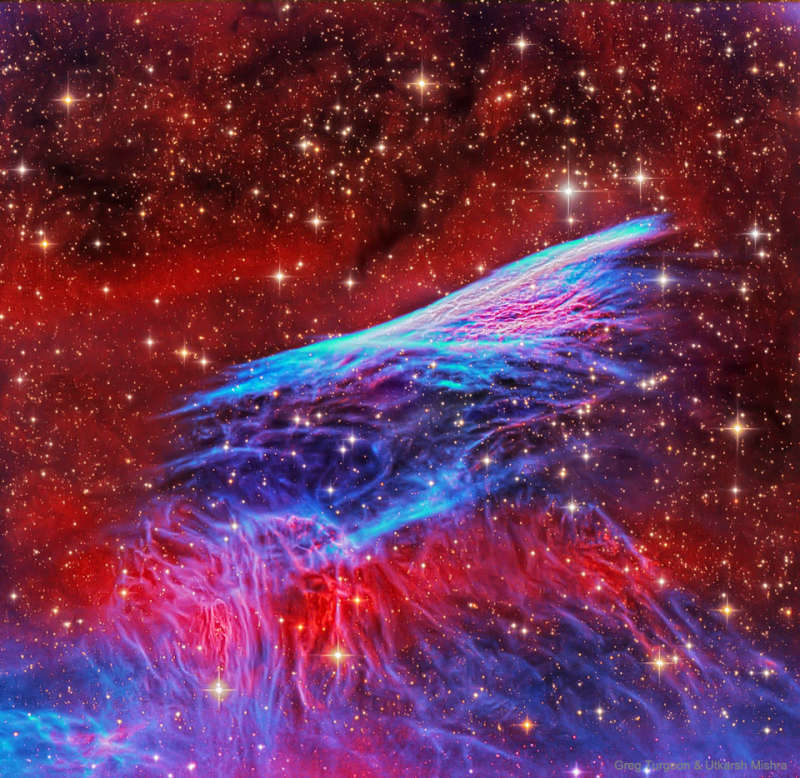
|
Credit & Copyright: Greg Turgeon &
Utkarsh Mishra
Explanation:
This supernova shock wave plows through interstellar space
at over 500,000 kilometers per hour.
Near the middle and moving up in
this
sharply detailed color composite,
thin, bright, braided filaments are actually long ripples
in a cosmic sheet of glowing gas
seen almost edge-on.
Cataloged as
NGC 2736,
its elongated appearance suggests its popular name,
the Pencil Nebula.
The Pencil Nebula is about 5 light-years long and 800
light-years away, but represents only a small part of the
Vela supernova remnant.
The Vela remnant itself
is around 100 light-years in diameter, the expanding
debris
cloud of a star that was seen to
explode about 11,000 years ago.
Initially, the
shock wave was moving at millions of kilometers
per hour but has slowed considerably, sweeping up
surrounding interstellar material.
In the
featured
narrow-band, wide field image,
red and blue colors track, primarily, the characteristic glows of
ionized hydrogen and
oxygen atoms, respectively.
Portal Universe:
Random APOD Generator
|
January February March April May June July August September October November December |
| ||||||||||||||||||||||||||||||||||||||||||||||||
NASA Web Site Statements, Warnings, and Disclaimers
NASA Official: Jay Norris. Specific rights apply.
A service of: LHEA at NASA / GSFC
& Michigan Tech. U.
Based on Astronomy Picture
Of the Day
Publications with keywords: supernova remnant
Publications with words: supernova remnant
See also:
- APOD: 2025 October 1 Á NGC 6960: The Witchs Broom Nebula
- APOD: 2025 June 9 Á Between Scylla and Charybdis: A Double Cosmic Discovery
- Supernova Remnant Cassiopeia A
- APOD: 2025 January 8 Á Supernova Remnants Big and Small
- APOD: 2024 September 18 Á The Mermaid Nebula Supernova Remnant
- APOD: 2024 April 16 Á Filaments of the Vela Supernova Remnant
- APOD: 2024 April 3 Á Unusual Nebula Pa 30
